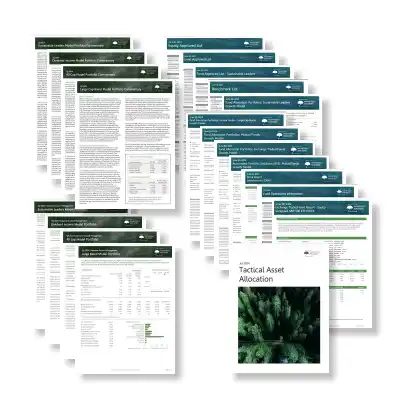Private Credit Boom
Published January 2024
- Private credit’s assets under management (AUM) have skyrocketed to $1.6 trillion as of March 2023, a doubling in size since 2018.
- Investors have been attracted to private credit because it offers higher yields due to an illiquidity premium.
- Borrowers are attracted to private credit’s superior deal customization, speed, execution, and confidentiality
A boom in private credit has led medium-sized companies to shift away from bank lending and leveraged loans. Private lending has rapidly grown from a niche market into a formidable rival to traditional sources of financing as money pours into private credit funds from asset managers, insurance companies, endowments, and pension funds.
According to alternative asset data provider Preqin, private credit’s assets under management (AUM) have skyrocketed to $1.6 trillion as of March 2023, double its size in 2018. Excluding $440 billion in uninvested capital, private credit’s $1.2 trillion in debt outstanding is almost the size of the U.S. high yield bond and leveraged loan markets.
It is nearing half the size of overall U.S. banks’ business lending of around $2.8 trillion. Asset manager BlackRock projects private credit will grow to $3.5 trillion AUM by 2028.

Private credit refers to debt financed by non-bank lenders, such as alternative asset managers like Blackstone, and which is not publicly traded. It covers a range of strategies, including direct lending, distressed, mezzanine, real estate, venture, and special situations.
According to Goldman Sachs Asset Management, direct lending is the largest strategy and accounts for around half of private credit’s assets. Direct lending loans are usually somewhat similar to leveraged loans with floating interest rates and non-investment grade credit risk profiles.
The main difference is that leveraged loans are typically sold to investors after being pooled into tradable securities such as collateralized loan obligations (CLO), whereas direct lending loans are held by the lenders until maturity.
Prior to recent years, private credit tended to serve smaller and less profitable borrowers that could be too small for the public debt market and might have challenges with attaining conventional bank financing that skewed toward less risky borrowers.
The market opportunity for private credit has expanded in recent years into a more diverse group of borrowers as the growth in public debt markets caused a structural shift toward serving larger borrowers with bigger deal sizes.
The average deal size for issuing high yield bonds and leveraged loans has steadily risen over the last decade to $700 million and $470 million last year, respectively. Bigger average deal sizes are unrealistic for an increasing number of medium sized firms looking to issue relatively smaller amounts of debt.
Issuing public debt with small deal sizes can be unattractive for borrowers because it risks being undersubscribed among investors due to less liquidity.
“…private credit’s $1.2 trillion in debt outstanding is almost the size of the U.S. high yield bond and leveraged loan markets.”
According to Pitchbook, leveraged loan issuance among middle market companies has stagnated near multi-decade lows in recent years as financing shifts to private lenders. The National Center for the Middle Market estimates there are nearly 200,000 U.S. middle market businesses with revenue between $10 million and $1 billion. These medium-sized businesses account for around one-third of U.S. private sector Gross Domestic Product (GDP).
Private credit’s growth has been supported by borrowers seeking private financing because it can provide more customization with deal terms, quicker speed and certainty of execution, and increased confidentiality.
Private loans often have one lender which fosters closer relationships with borrowers compared to working with a group of lenders for leveraged loans. Closer relationships between borrowers and lenders can enable more customized financing terms and a wider range of options in the event of default. Fewer parties in a deal may also create quicker and more certain deal execution, especially during times of market stress.
Investors have been attracted to private credit because it offers higher yields due to an illiquidity premium. This yield premium is driven by private loans’ non-publicly traded status and their historically higher credit risk.
The Cliffwater Direct Lending Index, an asset-weighted index of 13,000 loans using SEC required filings for business development companies, had an average yield around 11% over the last decade compared to mid-single digit average yields for high yield bonds and leveraged loans.
The yield spread between private loans and leveraged loans has recently narrowed to less than 3% as the Federal Reserve’s interest rate hikes caused a jump in leveraged loan yields. Some long-term investors who engage in asset liability matching, such as pension funds and life insurance companies, also appreciate that private debt is not held in mark-to market investment vehicles.
This means private loans’ accounting value tends to be less volatile during periods of market stress and can thus reduce unrealized losses.
The swift rise in private credit has raised concerns among some investors and regulators. Private lenders have less stringent public disclosure requirements compared to banks and lack the visibility of leveraged loans.
The lack of transparency creates uncertainty about the level of distress in private credit as the newly popular asset class endures its first higher interest rate environment and potential recession. A material shock in this less regulated area of the economy might reveal surprising vulnerabilities in the financial system, however, private credit is likely not a large enough market to cause a broader systemic issue.
by Dan Kupiec, CFA, Senior Investment Analyst at MainStreet Advisors
This publication was prepared by MainStreet Investment Advisors, LLC (“MainStreet Advisors”), an investment adviser registered with the SEC and wholly-owned subsidiary of Fifth Third Bank, National Association. Registration as an investment adviser does not imply any level of skill or training. Information and opinions herein are as of the publication date and are subject to change without notice based on market and other conditions. Any graph, data, or information is considered reliably sourced and for educational purposes only. Any suggestion of cause and effect or of the predictability of economic or investment cycles is unintentional. This publication may contain forward-looking statements and/or candid statements and observations regarding investment strategies, asset allocation, individual securities, and economic and market conditions; however, there is no guarantee that the statements, opinions, or forecasts will prove to be correct. The material included herein was prepared or is distributed solely for information purposes; is not a solicitation or an offer to buy/sell any security or instrument, to participate in any trading strategy or to offer advisory services by MainStreet Advisors; is not intended to be used as a general guide to investing or as a source of any specific investment recommendations; makes no implied or express recommendations concerning the manner in which any client’s account should or would be handled; and should not be relied on for accounting, tax or legal advice. There are risks involved with investing including possible loss of principal and the value of investments and the income derived from them can fluctuate. Investing for short periods may make losses more likely. Investors are urged to consult with their financial advisors before buying or selling any securities. Not a deposit, not FDIC insured, may lose value, not bank guaranteed, not insured by any federal government agency.
Source: BlackRock, Bloomberg, Wall Street Journal, CFRA Research



